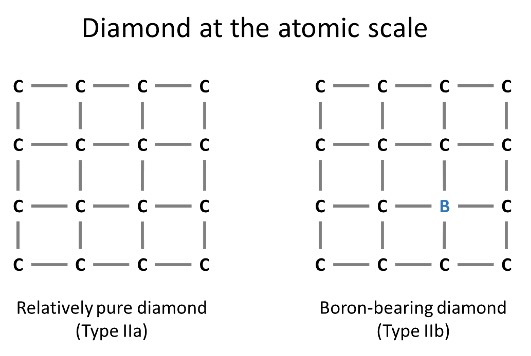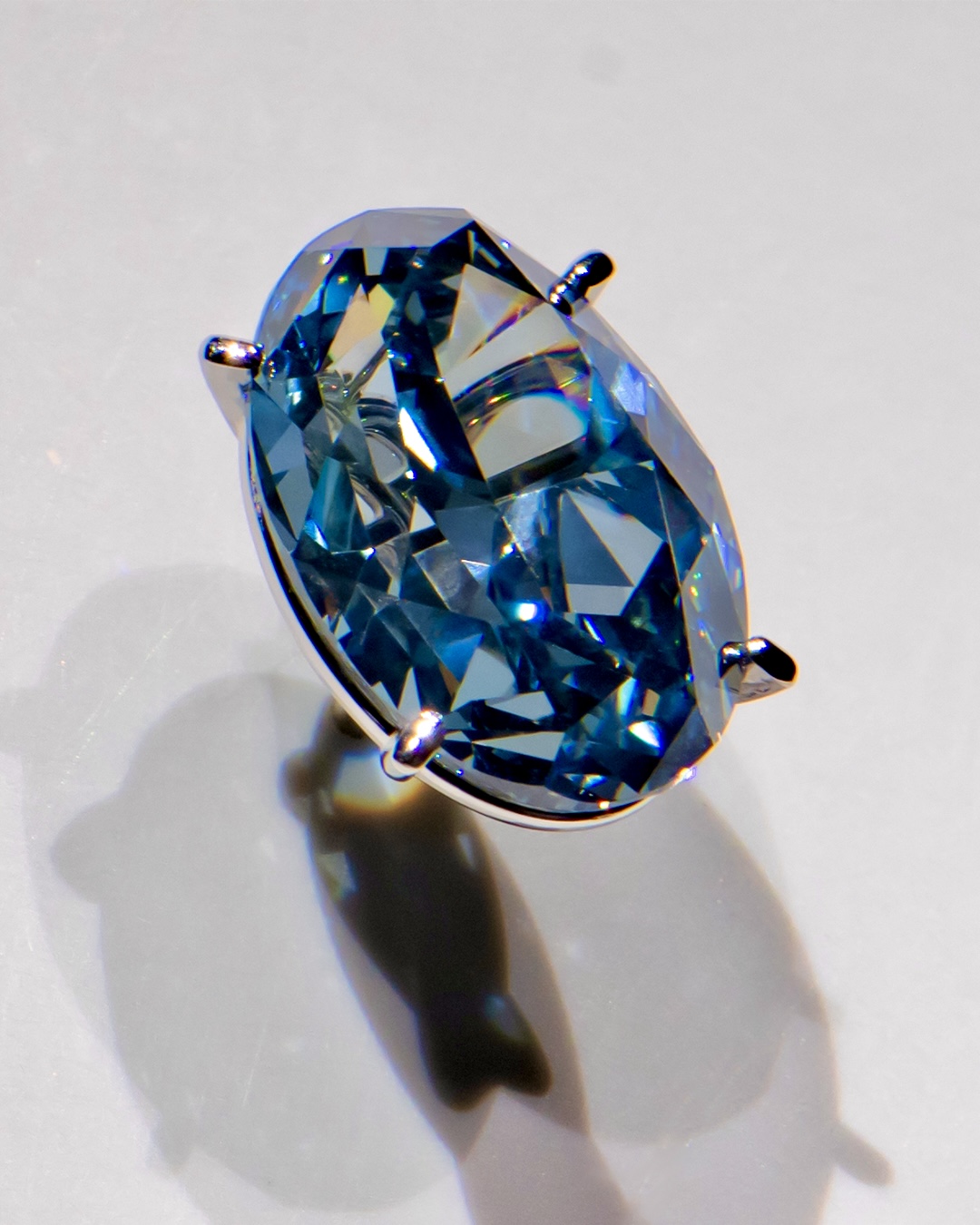Blue Diamonds and Their Remarkable Link to Ancient Oceans

Diamonds come in many colors, including handsome hues of blue. One of the world’s most famous gemstones, which has captivated millions of visitors from its pedestal at the Smithsonian, is the Fancy Deep grayish blue Hope diamond. This color comes from trace amounts of boron, which substitutes for carbon in the diamond crystal structure, as shown below. Some blue diamonds get their color from structural defects produced by radiation exposure or from more complex defects involving hydrogen, but the majority are colored by boron. Scientists have only recently learned that boron-bearing diamonds such as the Hope have an incredible geological backstory.

Boron-bearing diamonds are technically classified as Type IIb. The element boron is abundant at Earth’s surface, but deeper down inside the planet, where diamonds grow, there is very little boron available. Exactly where in the Earth these diamonds crystallize and how they inherit their distinctive punch of boron has remained unknown for decades. In 2018, the results of an innovative study on Type IIb diamonds was published in the journal Nature. In this study led by GIA, a strategic effort was made to find and examine mineral inclusions such as those shown below. By studying inclusions, which are small pieces of material trapped in the diamond during crystallization, scientists learned about the host rock and depth where Type IIb diamonds form.

Two findings astonished the research team. Firstly, the particular minerals identified in these inclusions are only found at extremely high pressures, very deep in the Earth, leading to the conclusion that Type IIb diamonds formed at least as deep as the so-called transition zone (410–660 km) and perhaps deeper, reaching into the lower mantle (deeper than 660 km). For comparison, this is approximately four times deeper than most other kinds of diamonds, which form near the base of old and thick continents at depths of about 150 to 200 km.
The second exciting observation was that the inclusion mineralogy indicated the diamonds grew in the presence of ocean crust, which was carried down to the lower mantle by the slow, geologic process of subduction. The ongoing descent of subducting oceanic rocks is like a conveyor belt that is capable of drawing surface materials like water, carbon, and boron, down into the interior of the Earth. For Type IIb diamonds, the connection with deeply subducted tectonic plates raises the possibility that the boron atoms contained in these blue gems may have originally been derived from ancient oceans, as shown in the conceptual model below.

Now we know that boron-bearing blue diamonds such as the Hope are among the rare category of diamonds known as “superdeep” diamonds. But why does boron cause color this attractive color to appear at all? Boron modifies the electronic structure in such a way that it will absorb some wavelengths of light. As long as they are not “compensated” by other defects, the boron atoms in diamond are effectively missing an electron compared to neighboring carbon atoms. It is these uncompensated boron atoms that can interact with and absorb light, especially at particular wavelengths in the infrared spectrum. If the absorption is intense enough, it extends from the infrared part of the spectrum (invisible to us) out into the visible light spectrum, where it preferentially absorbs red light. The result is a diamond that appears wonderfully blue.
